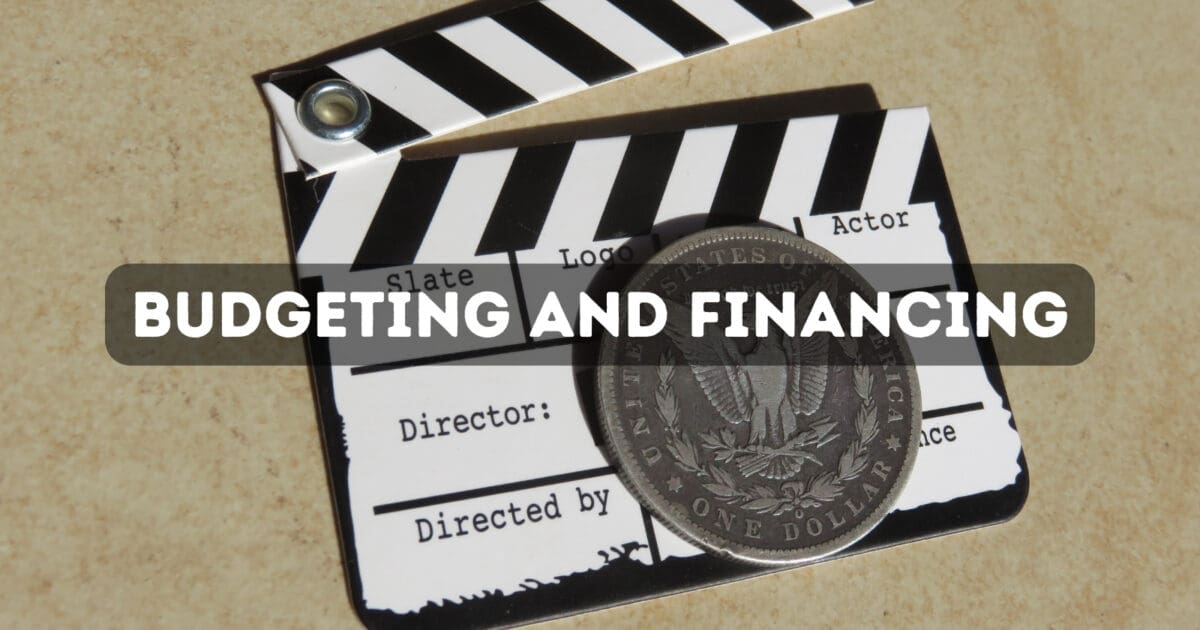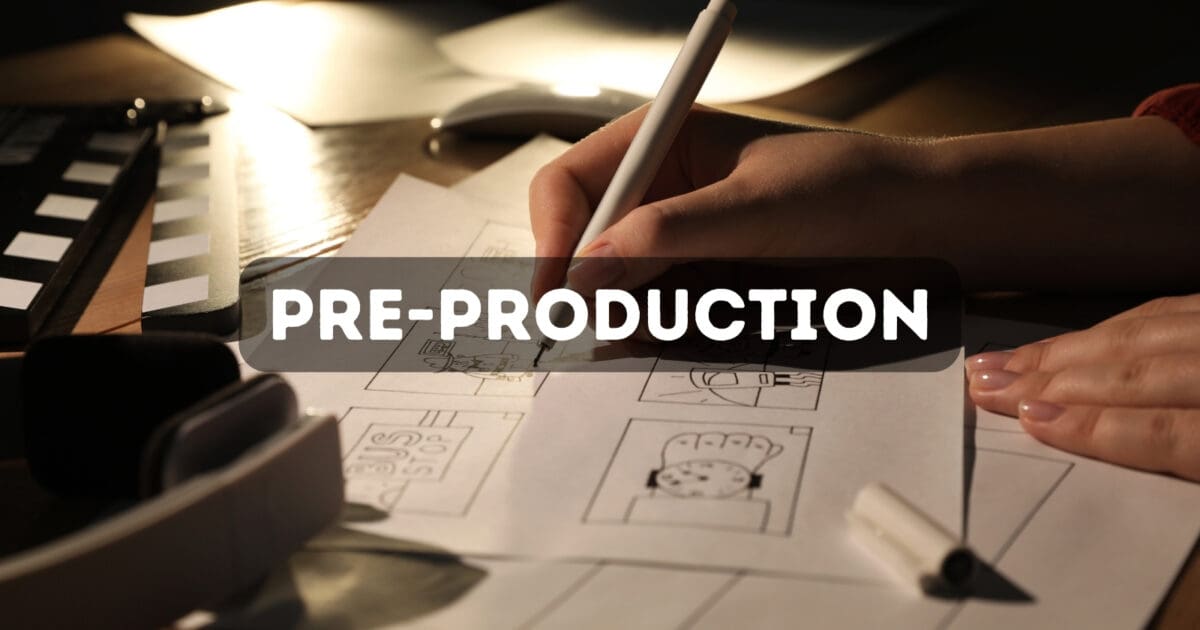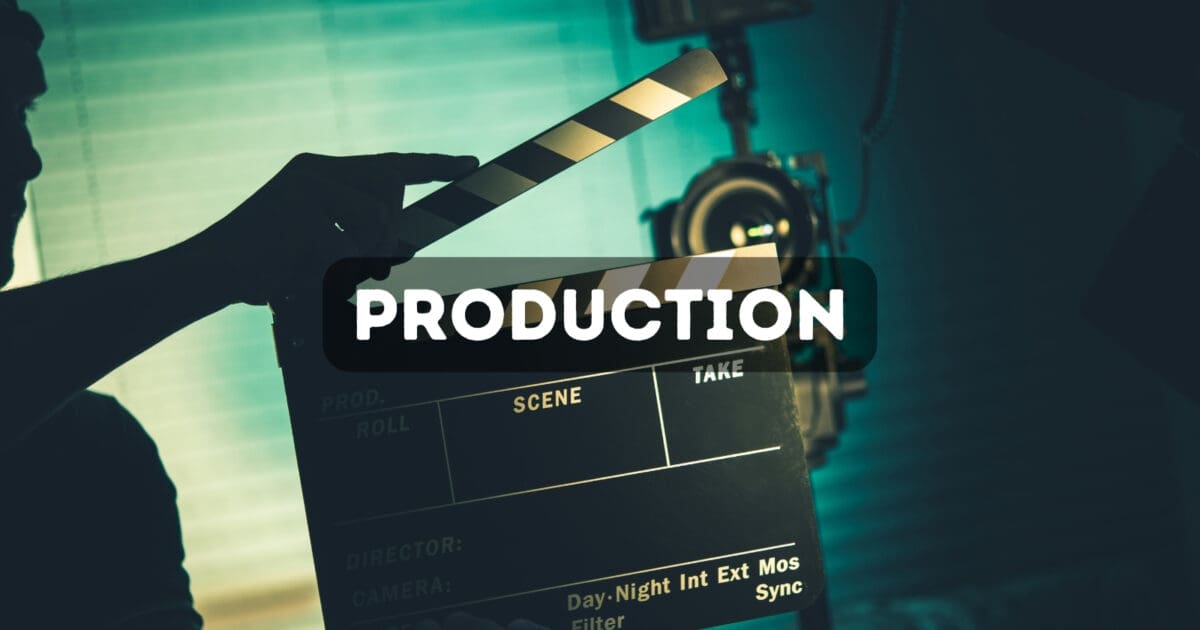From script development to post-production, the 7 stages of film production offer a comprehensive roadmap for filmmakers to navigate the complexities of bringing a cinematic vision to fruition. Each stage presents unique challenges and opportunities that contribute to the successful creation of a compelling movie.

In this article, I will outline the seven stages of film production, from development to distribution, providing insights into the creative and technical aspects of bringing a film to fruition.
7 Stages of Film Production:
- Script Development
- Budgeting and Financing
- Pre-Production
- Production
- Post-Production
- Marketing
- Distribution
Here are the 7 stages of film production you need to remember. Generally speaking, there are three main stages in film production; pre-production, production, and post-production.
These 3 main stages I prefer to call 3 Pillars Film Production as they are foundational and are required for all 7 stages of production to work. Here is a brief overview of the fundamental stages of film production.
Pillar 1: Pre-Production
This stage involves a thorough breakdown of the whole script. The main idea here is to have an analysis of the whole film. Here, producers get to h see the whole thing from start to finish.
In the pre-production stage, you also get to know how much the film will cost and who will fund the whole project. Individual investors, TV, big corporations, and even governments are familiar investors in the film industry.
It is also in the pre-production stage that cast and crew members are chosen and roles assigned. In some cases, the film distributor is identified in this stage.
Read More: 22 of the Best Screenwriting Books, You Must Read!
Pillar 2: Production
Here, the rubber meets the road as the main work begins. The production stage is where the scenes are shot, and most of the work takes place. It is usually the most demanding stage of the whole process, and it also takes the lion’s share of the budget.
Pillar 3: Post-Production
Once the main work ends, the producers then polish the film, marketing and distributing it. It is at this stage the film hits theatres and TV screens and gets distributed the world over.
Now each stage is critical in the whole process and needs the right equipment and personnel. Now that you have a sneak peek of the process. Let’s take it even further with a detailed explanation.
You may also like: What is the best video editing software for beginners?
Now let’s jump into each production stage in more detail.
Stage 1: Script Development

Writing the script is probably the most important step in all the stages of film pre-production. It forms the backbone of what the film is all about. When looking for inspiration, there are a few areas that you might consider when writing the script.
A true story is always a rich ground to make a film, so it is a book. If a story is inspiring enough or touching enough, you might consider it a unique story. Books have always been a rich hunting ground for film producers, but you need the authors’ green right before turning a book into a film.
Besides that, you can choose to come up with an original piece of work, bringing to life an original concept. Script development is one of the fundamental stages of film production, and you need to be at your best when developing one.
Stage 2: Budgeting and Financing

Money makes the world spin, right? Well, it surely does make a film. Before you venture too deep into the film, you need to establish how much money is required. Budgeting is one of the crucial stages of film pre-production, and you need to show how much money the investors are willing to fund.
Several vital areas will form the basis of your budget. The cost of the cast, the production cost, the equipment, the customer, and post-production are just a few. Ensure that you remain within your budget-cutting into things that are not necessary. As part of the development stage of the film, production budgeting has a significant bearing on a film.
Don’t make the mistake of spending all your funds in the initial two stages and leave no funds for the latter stages of film post-production. As it is the last stage, the funds for distribution should be earmarked and set aside to avoid any wastages.
Additional Reading Resource on Budgeting: How to get your short film funded
Stage 3: Pre-Production

Now that you have the script and the budget is well funded, it is time to get the show started. In the pre-production stage, the film is clearly outlined from start to finish. The roles in each stage are identified, and the only remaining thing is to find the cast. This may seem like an easy and straightforward task, but it isn’t. The truth is, the actors and actresses will have a significant impact on the film’s success. It is wise to work with the film distributor to help choose a cast that will appeal to the target audience.
The job does not end there as the production team, the designers, video, and sound crew are hired at this stage. In the real sense, it is at this development stage of film production that everything about the film is known.
Based on the finances available, the set location is determined at this stage of film pre-production. Keep in mind that though a remote location is pricey, it will help you wrap up everything fast. Working in a remote location enables the cast to work long hours of up to 18 hours a day.
Stage 4: Production

Now the real work begins. Casts have been chosen, roles assigned, and crew ready to roll. During the production stage, all the different categories of the film come together to actualize the film. It is usually the most demanding part of film production and needs utmost concentration.
The essence of production is bringing to life the story in an authentic and captivating manner. Under the directors’ guidance, the film is recorded in scenes with crazy attention given to the finer details. Usually, the actors come at different time slots, and once they arrive on set, they are wardrobed and rehearse their scenes. Usually, they go through what is expected of them, consulting with the directors and crew on the best way to approach the scene.
To save on time and resources, the set is constructed well in advance so that when the actors come in, they will be ready to roll. As the camera and sound crew work with the actors and directors, the production design crew is always a step ahead. They are always working on the next scene, ensuring everything flows together.
During the whole production process, the assistant director, in most cases, takes center stage. The AD is the one who calls all the shots. Words like “action” “cut” are common when shooting a film and maybe echoed by the director or AD.
The script supervisor is always on-site to work out any and every continuity issues. What’s the role of the director in all this, you ask? The director supervises the scripts, the shoot, and the footage and ensures everything is top-notch. Additionally, they must ensure that the shoot’s roles, cast, and quality are up to the required standard. Most importantly, the director approves the next day’s shoot and views the day’s footage.
To keep the morale high (especially in remote locations), the cast, crew, and department heads may gather around to watch yesterday’s footage. At the end of it all, the production office may organize what is often referred to as the wrap party. Production is a vital development stage in film production and tends to take most of the time.
Stage 5: Post-Production

It is easier to assume that once a film has been shot, all the work is complete. But the truth is, with the completion of shooting a film, a lot of work still needs to be done. At the post-production stage, two important people come into play; the music composer and the editors. The editor’s role is to work through the scenes that have been shot, organizing them into a linear film.
The editors have to work hand in hand with the director(s) to determine which scenes make the cut. Time is also a crucial factor that needs to be stipulated. As the scenes are carefully selected and created into a sketch, a music composer comes into play, picking songs to go with the different scenes.
If the budget allows, a visual artist is brought in to help bring out the best visual effects. The color direction and sound are carefully selected to help make the best film. All this helps create the final film, which is then ready for distribution.
Stage 6: Marketing

As one of the last stages of film post-production, marketing is a crucial stage of film production. This stage involves creating a buzz about the film. It means taking advantage of every opportunity you get to tell people about the film.
Film festivals are often the best place to market the films as they already attract the right audience. Social media marketing is another way that filmmakers can use to market their films. Release teasers on YouTube and other video platforms, create eye-catching posters for Instagram, Facebook, and Twitter, and let people know that a film is about to be released.
All this is to create awareness of the film and invite people to come out and watch it when it is released as this is one of the steps in the seven stages of film production, the funds for this need to be set apart well in advance to avoid any hiccups.
*Pro tip: use teasers to create buzz around the film and for marketing purposes.
Stage 7: Distribution

The last and most crucial stage in film production is distribution. It does not matter how good a film is. If it lacks that distribution edge, it will not enjoy financial success. In most cases, film distributors are engaged to shed light on the best way to distribute a film.
A film distributor can tell which is the best target audience for the film based on the actors, the genre, and the film’s general feel. Based on this, they embark on a journey, usually designed into a business model, to distribute the film for maximum financial gain.
Theatres and TV are prime for any film and pose as a rich ground for the distribution of firms. When looking at the broader perspective of distribution, film producers look at DVD, streaming and other channels like Tubi to distribute the movies worldwide.
Your Questions Answered:
What are the roles in film production?
There are a plethora of different roles in film production, notably, the director of photography, the director of audio, the casting director, makeup artist, hair designer, production designer, and location manager. On top, there are the directors, the producers, the assistant directors, and the composer, plus so much more roles.
How do you come up with an idea for your film?
Filmmaking starts by coming up with the idea that you feel is cut for the screens. A true story, book, or fiction are some of the most common ways of developing a script.
What are the 5 stages of film production?
Though there are seven stages of film production, some steps can be combined to give five stages. The fundamental stages of film production are; pre-production, production, post-production, marketing, and distribution.
Our Final Thoughts

There you have it, folks, those are the seven stages of film production you should know about. Next time you are at the movies, take time to appreciate the work that filmmakers go through to make a film. For all you aspiring filmmakers, it is time to make those films!
We hope this article on the seven stages of film production was helpful to you, let us know in your comments below. Also, here are a few of our latest blogs and resources. Check them out below 🙂
Great article. It is helpful as a film maker in training